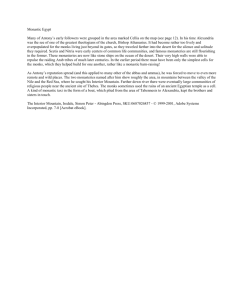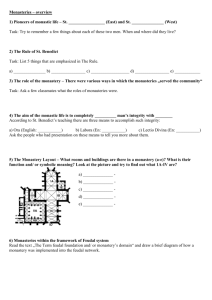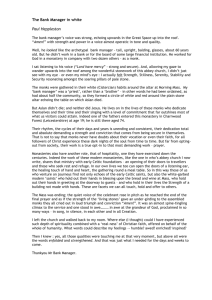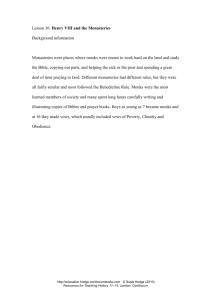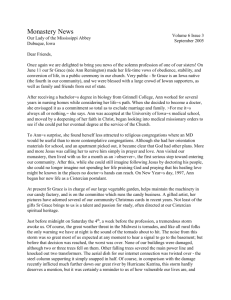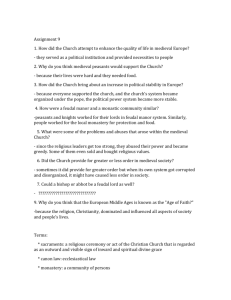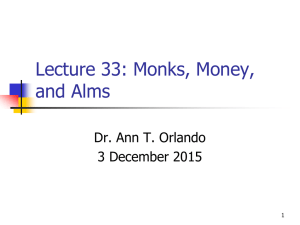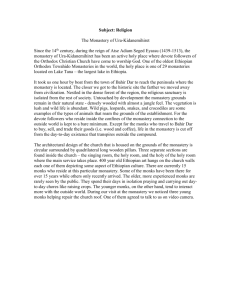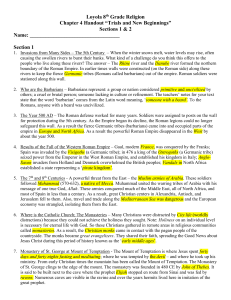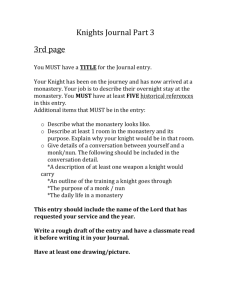The role of the monastery:
advertisement
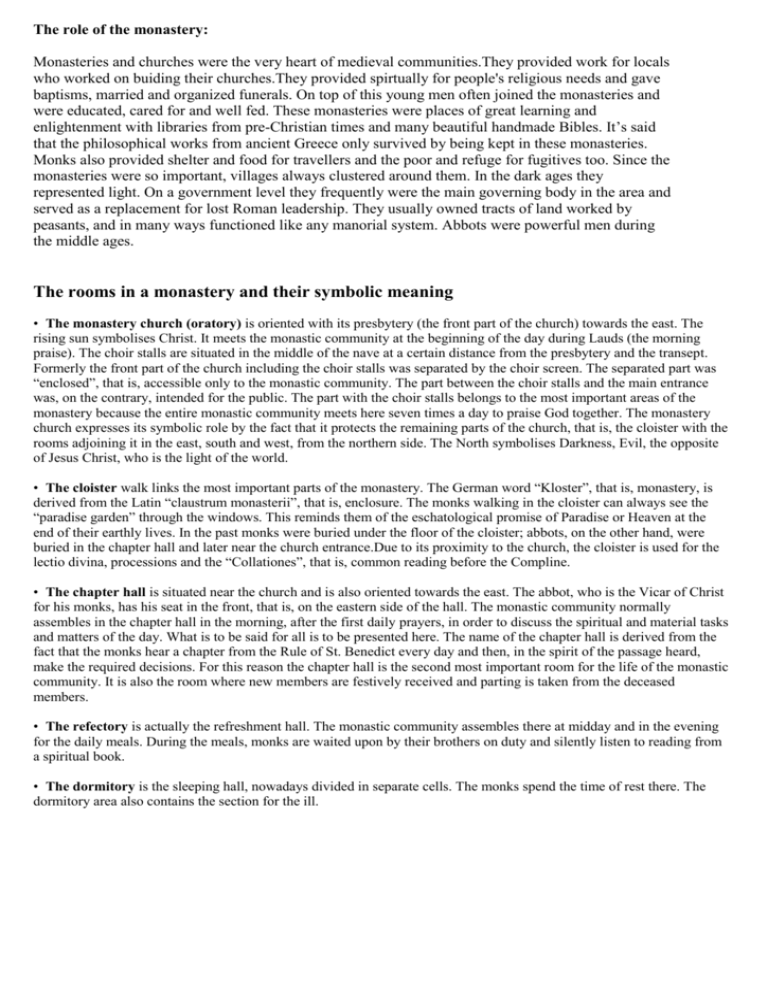
The role of the monastery: Monasteries and churches were the very heart of medieval communities.They provided work for locals who worked on buiding their churches.They provided spirtually for people's religious needs and gave baptisms, married and organized funerals. On top of this young men often joined the monasteries and were educated, cared for and well fed. These monasteries were places of great learning and enlightenment with libraries from pre-Christian times and many beautiful handmade Bibles. It’s said that the philosophical works from ancient Greece only survived by being kept in these monasteries. Monks also provided shelter and food for travellers and the poor and refuge for fugitives too. Since the monasteries were so important, villages always clustered around them. In the dark ages they represented light. On a government level they frequently were the main governing body in the area and served as a replacement for lost Roman leadership. They usually owned tracts of land worked by peasants, and in many ways functioned like any manorial system. Abbots were powerful men during the middle ages. The rooms in a monastery and their symbolic meaning • The monastery church (oratory) is oriented with its presbytery (the front part of the church) towards the east. The rising sun symbolises Christ. It meets the monastic community at the beginning of the day during Lauds (the morning praise). The choir stalls are situated in the middle of the nave at a certain distance from the presbytery and the transept. Formerly the front part of the church including the choir stalls was separated by the choir screen. The separated part was “enclosed”, that is, accessible only to the monastic community. The part between the choir stalls and the main entrance was, on the contrary, intended for the public. The part with the choir stalls belongs to the most important areas of the monastery because the entire monastic community meets here seven times a day to praise God together. The monastery church expresses its symbolic role by the fact that it protects the remaining parts of the church, that is, the cloister with the rooms adjoining it in the east, south and west, from the northern side. The North symbolises Darkness, Evil, the opposite of Jesus Christ, who is the light of the world. • The cloister walk links the most important parts of the monastery. The German word “Kloster”, that is, monastery, is derived from the Latin “claustrum monasterii”, that is, enclosure. The monks walking in the cloister can always see the “paradise garden” through the windows. This reminds them of the eschatological promise of Paradise or Heaven at the end of their earthly lives. In the past monks were buried under the floor of the cloister; abbots, on the other hand, were buried in the chapter hall and later near the church entrance.Due to its proximity to the church, the cloister is used for the lectio divina, processions and the “Collationes”, that is, common reading before the Compline. • The chapter hall is situated near the church and is also oriented towards the east. The abbot, who is the Vicar of Christ for his monks, has his seat in the front, that is, on the eastern side of the hall. The monastic community normally assembles in the chapter hall in the morning, after the first daily prayers, in order to discuss the spiritual and material tasks and matters of the day. What is to be said for all is to be presented here. The name of the chapter hall is derived from the fact that the monks hear a chapter from the Rule of St. Benedict every day and then, in the spirit of the passage heard, make the required decisions. For this reason the chapter hall is the second most important room for the life of the monastic community. It is also the room where new members are festively received and parting is taken from the deceased members. • The refectory is actually the refreshment hall. The monastic community assembles there at midday and in the evening for the daily meals. During the meals, monks are waited upon by their brothers on duty and silently listen to reading from a spiritual book. • The dormitory is the sleeping hall, nowadays divided in separate cells. The monks spend the time of rest there. The dormitory area also contains the section for the ill.
